How to use a meat thermometer
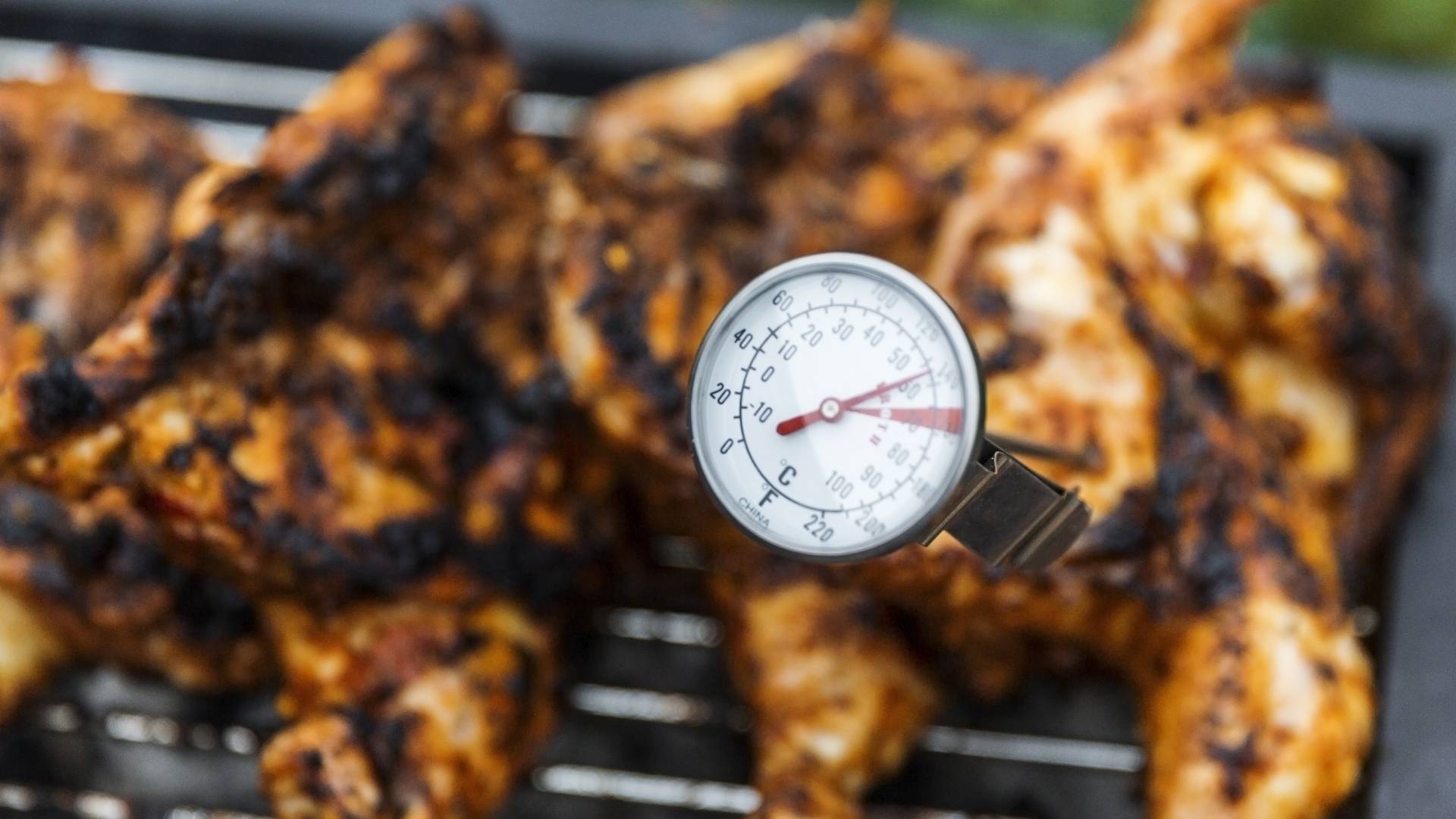

Learn how to use a meat thermometer the right way. Our guide includes key cooking temperatures for meat as well as a round up of the best meat thermometers you can buy.
One piece of equipment the Test Kitchen team cannot live without is their trusty digital meat thermometer. Here’s why you need to get one if you haven’t already.
A meat thermometer enables you to cook meat perfectly. It is an essential and affordable piece of equipment for any cooking enthusiast and can be used for both sweet and savoury dishes from roast chicken to homemade fudge. If you’ve already got one sitting in a draw but you’re not sure how to use it, read below for all of our top tips in the following areas:
What’s the difference between a meat and a cooking thermometer? How to use a meat thermometer Safe internal temperatures for beef and lamb Safe internal temperatures for duck, chicken and turkey Safe internal temperatures for pork Safe internal temperatures for fish Safe internal temperatures for baking Best meat thermometers
What is the difference between a meat thermometer and a cooking thermometer?
Ultimately, a meat thermometer and a cooking thermometer are the same. A meat thermometer outlines the specific scenario that it would be used in but they can also be used in other areas of cooking too.
Many meat thermometers are oven-proof which allows you to insert it into your roasting joint and keep an eye on the international temperature throughout the cooking process.
Some meat-specific thermometers will also highlight common meat temperatures on the dial which helps for an easy quick reference to see if your meat is ready.
Parenting advice, hot topics, best buys and family finance tips delivered straight to your inbox.
Meat and cooking thermometers are available in digital and dial format. We would highly recommend investing in a digital thermometer as they give more accurate measurements and are easier to read. Some digital thermometers are oven proof but the majority have a plastic-coating and cannot be placed in the oven.
Despite this, if you’re only going to invest in one thermometer, we’d recommend making it a digital thermometer as it can be used for meat, baking and confectionery. It’s an incredibly versatile piece of equipment which is affordable and takes the guesswork out of cooking.
How to use a meat thermometer?
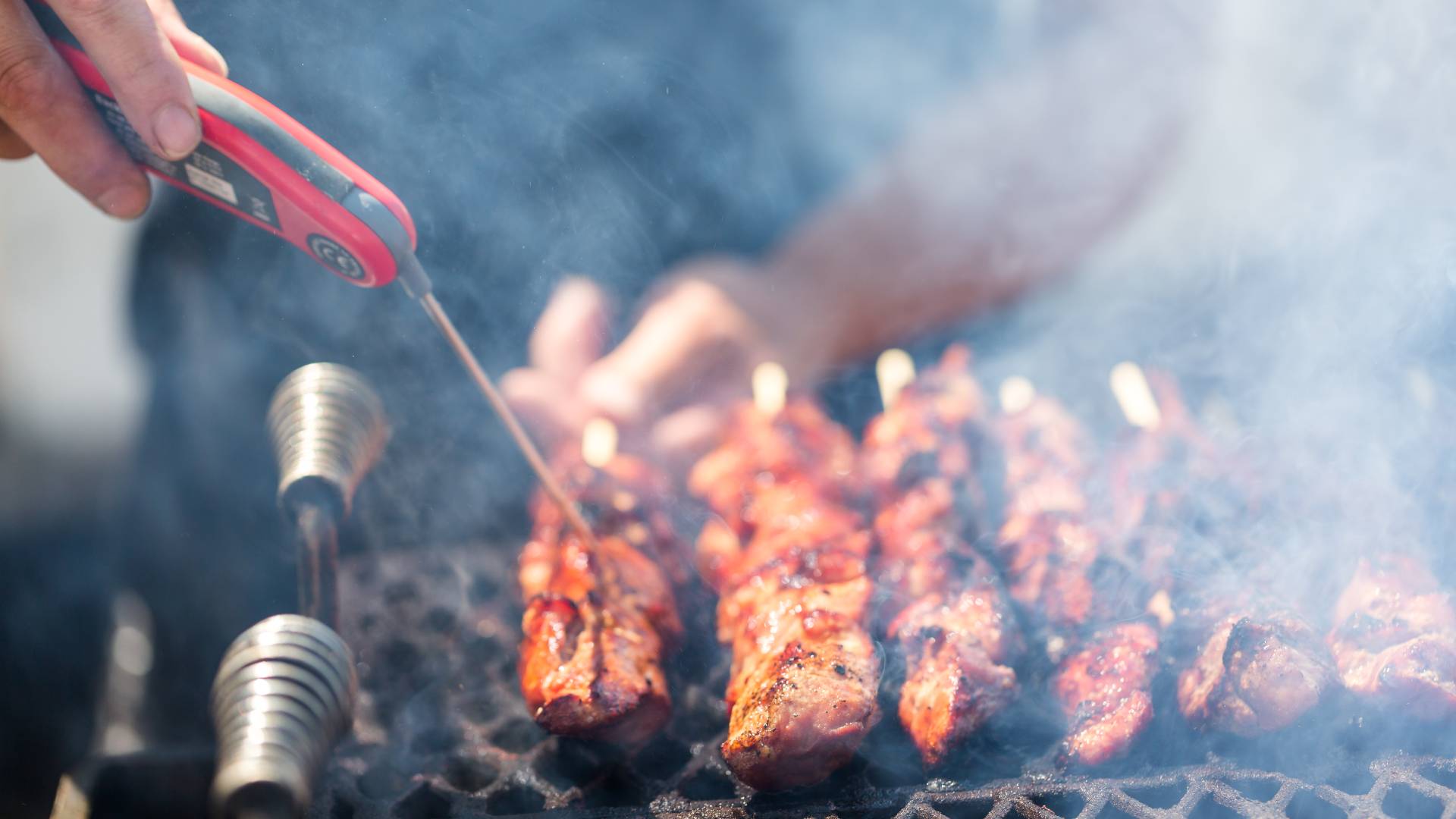
Using a meat thermometer really couldn’t be easier. It takes a lot of stress out of cooking meat as you can be certain it’s safe to eat. It also helps you cook the star of your dish perfectly every time. Whether you’re cooking steak to different peoples preferences (for tips check out how to cook the perfect steak), or a whole roast joint that you’re nervous not to overcook, a meat thermometer will put your mind at rest.
The first time you use your new meat thermometer, it’s important to clean it and always read the manufacturer’s guidance on how to use their specific type.
When using a meat thermometer to check the internal temperature of your meat, it’s important to insert the probe into the thickest part. When cooking chicken breasts or steak, you might find it preferable to flatten and tenderise the meat before cooking so that it’s a consistent thickness. This helps ensure the cooking is even however it is not essential. Just keep in mind that the thinner end of the meat will cook quicker which is why you always test the thickest area.
Insert the probe into the centre of the meat avoiding the bone or thick sections of fat as this will distort your reading.
It’s best to test the temperature of your meat towards the end of the cooking time so that you can be confident the outside of the meat is cooked. This ensures that you are not moving any raw bacteria into the centre of the meat, this is particularly important and relevant when cooking a roast beef joint that you might be hoping to serve rare.
If a cooking window has been given, for example, 30-40 minutes, check the temperature at 30mins and then adjust the cooking time accordingly.
TIP Remember, resting your meat is as important as the preparation and cooking of it. The internal temperature will increase by a couple of degrees during the process so stop cooking when it hits the lower boundary of safe cooking temp and it shouldn’t become overdone.
Key cooking temperatures
Safe internal temperatures for beef and lamb:
48-52C for rare 53-57C for medium-rare 58-62C for medium 63-67C for medium-well 68-72 for well done
Beef and lamb are safe to eat raw for most people and is preferable for some. It’s recommended that those with a weak immune system avoid rare meat and if you’re pregnant you should only eat it if well-cooked. We have a full list of foods to avoid eating when you’re pregnant.
However, ground beef should always be cooked well done. The Food Standards Agency UK explains that whole cuts of meat only have harmful bacteria on the external surface of the meat. So once cooked, even if it is rare it is safe to eat.
By mixing cuts of meat together and grounding it up to make mince, the bacteria is spread throughout, which is why it has to be completely cooked through.
Safe internal temperatures for duck, chicken and turkey:
74C
Chicken is safe to eat when the internal temperature is 74C and the juices run clear. For more guidance read our tips on how to cook chicken and chicken thighs.
The same temperature applies to turkey. If you’re cooking a turkey for your Christmas centrepiece, read our tips on how to cook turkey for perfect results no matter the size of your bird!
Safe internal temperatures for pork:
63C for medium 71C for well done
Generally, people don’t discuss the way they’d like their pork steak cooked in the same way as beef as it isn’t safe to eat rare. However, you can eat pork with a slight blush colour. If you’ve ordered it from a restaurant you might notice that the pork is succulent and juicy and just on the edge of what you might think is underdone. To achieve the perfect balance, it’s highly likely that the chef has used a thermometer to check the meat is at the minimum temperature to safely eat.
If you were roasting a joint of pork, we would recommend ensuring the internal temperature hits a minimum of 63C before resting it.
Want to know how to cook roast pork with crackling? Samuel Goldsmith has everything you need to know including tips from Rose Fooks and Elisa Roche.
Safe internal temperatures for fish:
60C
While it is possible to eat raw fish, most commonly enjoyed in the form of sushi, this is generally only made using very fresh fish. If you are making sushi at home, we recommend checking with your fishmonger that the fish you’ve chosen is suitable.
When cooking fish fillets or whole fish, ensure it reaches a minimum of 60C internal temperature and allow it to rest for a couple of minutes before serving.
Safe internal temperatures for baking:
98C sponge cake 105C jam 120C sugar syrup for Italian meringue
You can insert a skewer to your sponge cake and if it comes out clean it’s cooked. If you want extra certainty, use your thermometer! The reason we prefer a general digital cooking thermometer over a meat-specific one is that it can be used for testing your cakes and syrups or jams too. Sugar thermometers are often a little bulky and difficult to read but digital ones are accurate and quick!
Best meat thermometers
ETI SuperFast Thermapen 4 Professional Thermometer
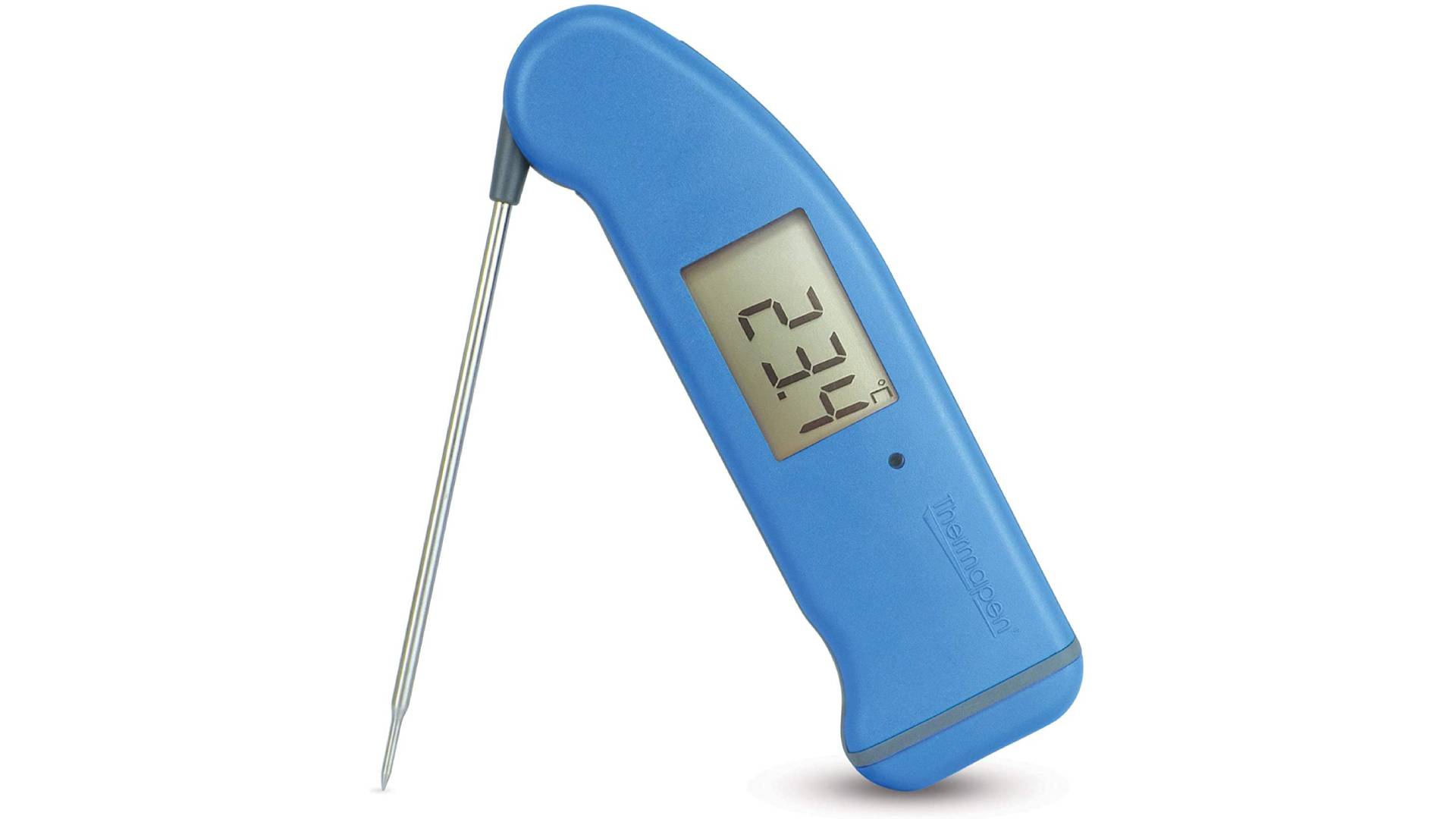
Price: £59.99 This is one of our go-to gadgets in the Test Kitchen. We love that it comes in lots of different colours and the folding probe which makes for safe, easy storage. The digital reading rotates 360 degrees, so no matter the angle it’s inserted, it’s easy to read. This thermometer also boasts a battery life of 3000 hours and an auto intelligent back light.
Salter Kitchen Analogue Meat Thermometer
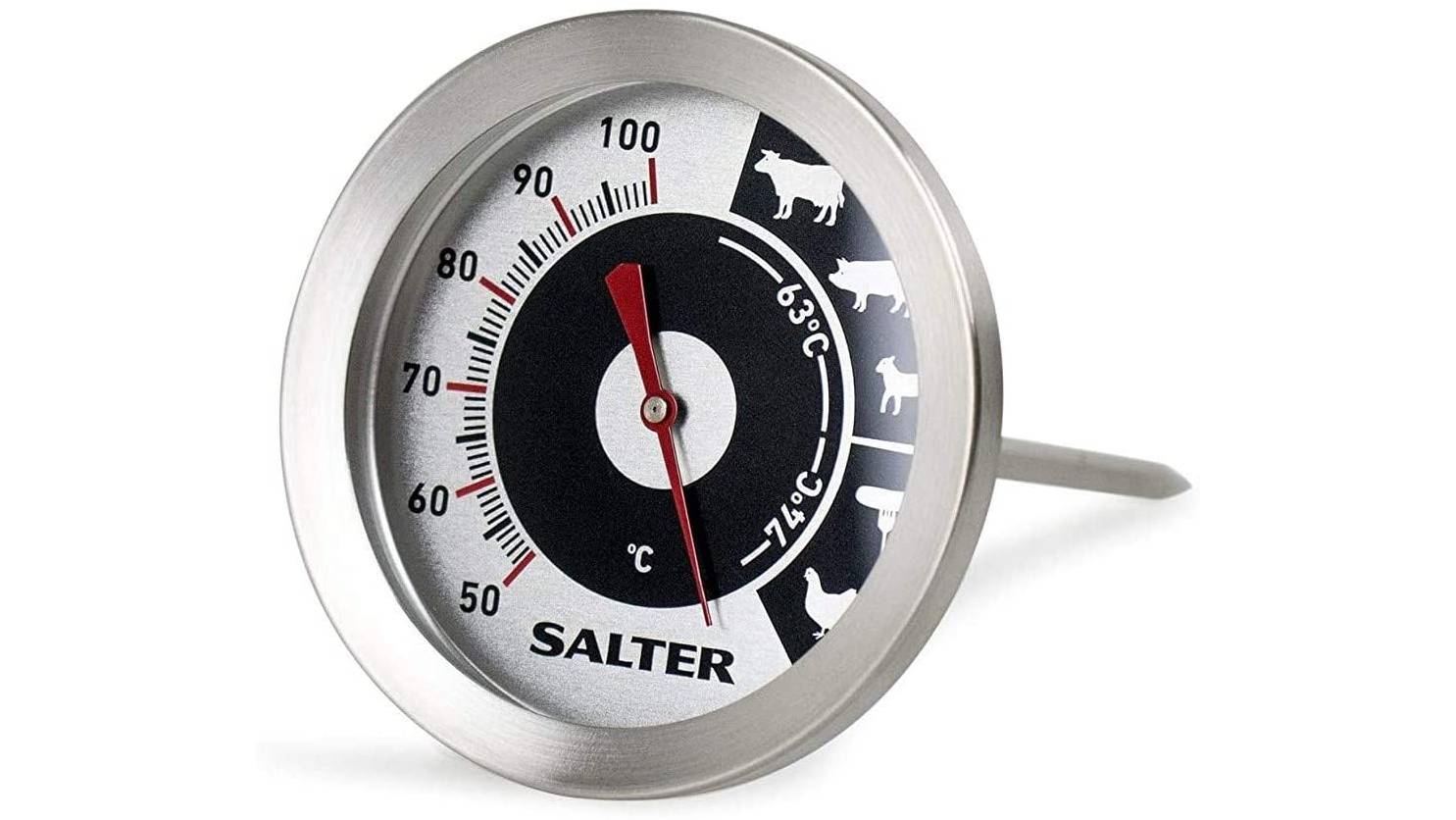
Price: £9.99 This ovenproof thermometer is sure to help your cook a perfect roast dinner, every time! It looks smart and has a fun, playful display so you can keep track of where your meat is at. It can also be used when cooking meat on the barbecue which is perfect if you’re cooking a big joint for a delicious smoky flavour.
Salter Digital Kitchen Thermometer
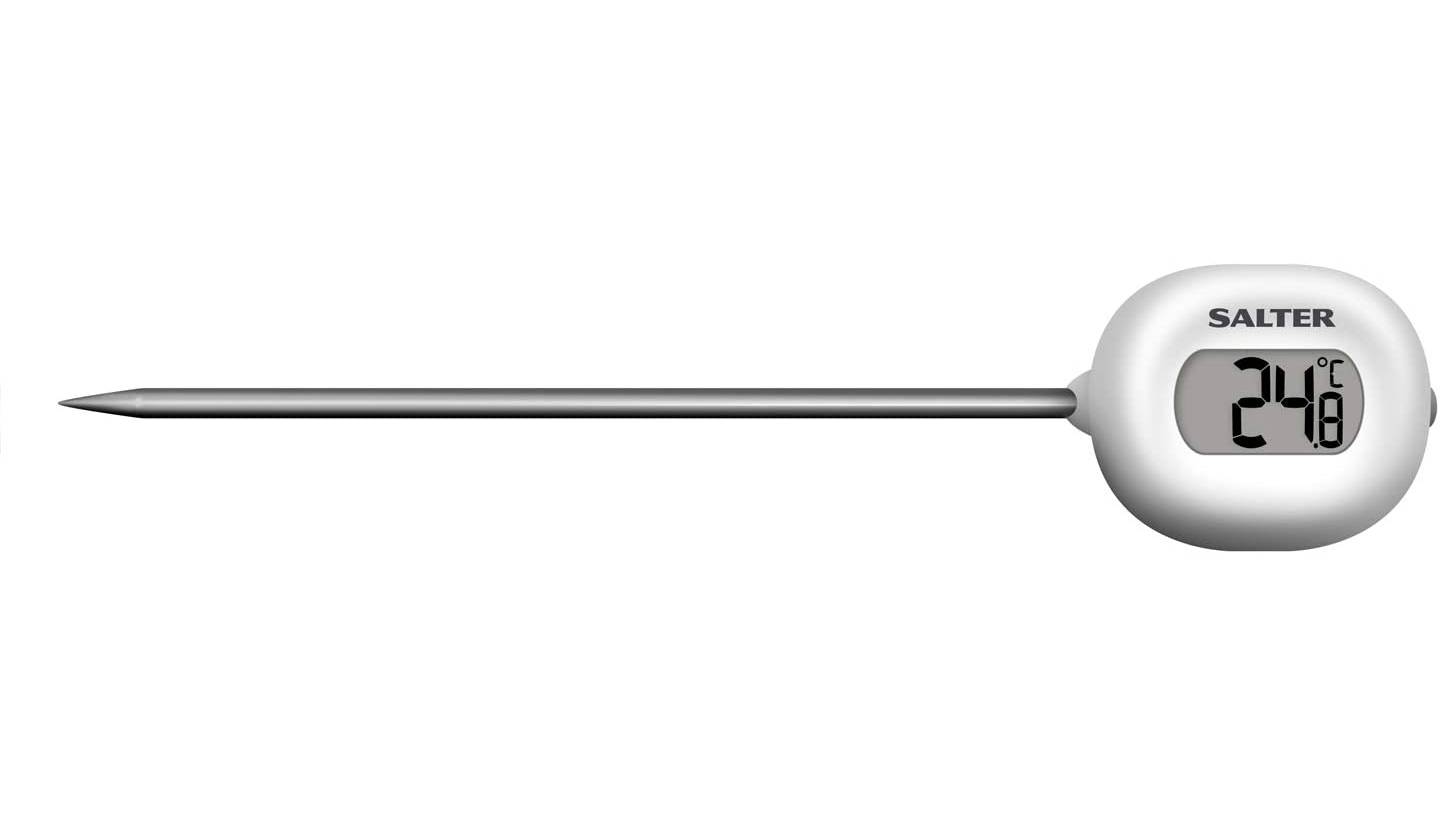
Price: £11.99 Ideal for meat and baking, this compact little thermometer won’t take up a lot of room but it will save you from a lot of headaches in the kitchen! It has a range of -20-200C so whether you’re cooking a steak on the BBQ or checking your sugar syrup it will give you an accurate reading in seconds.
MEATER Original 10m True Wireless Smart Meat Thermometer
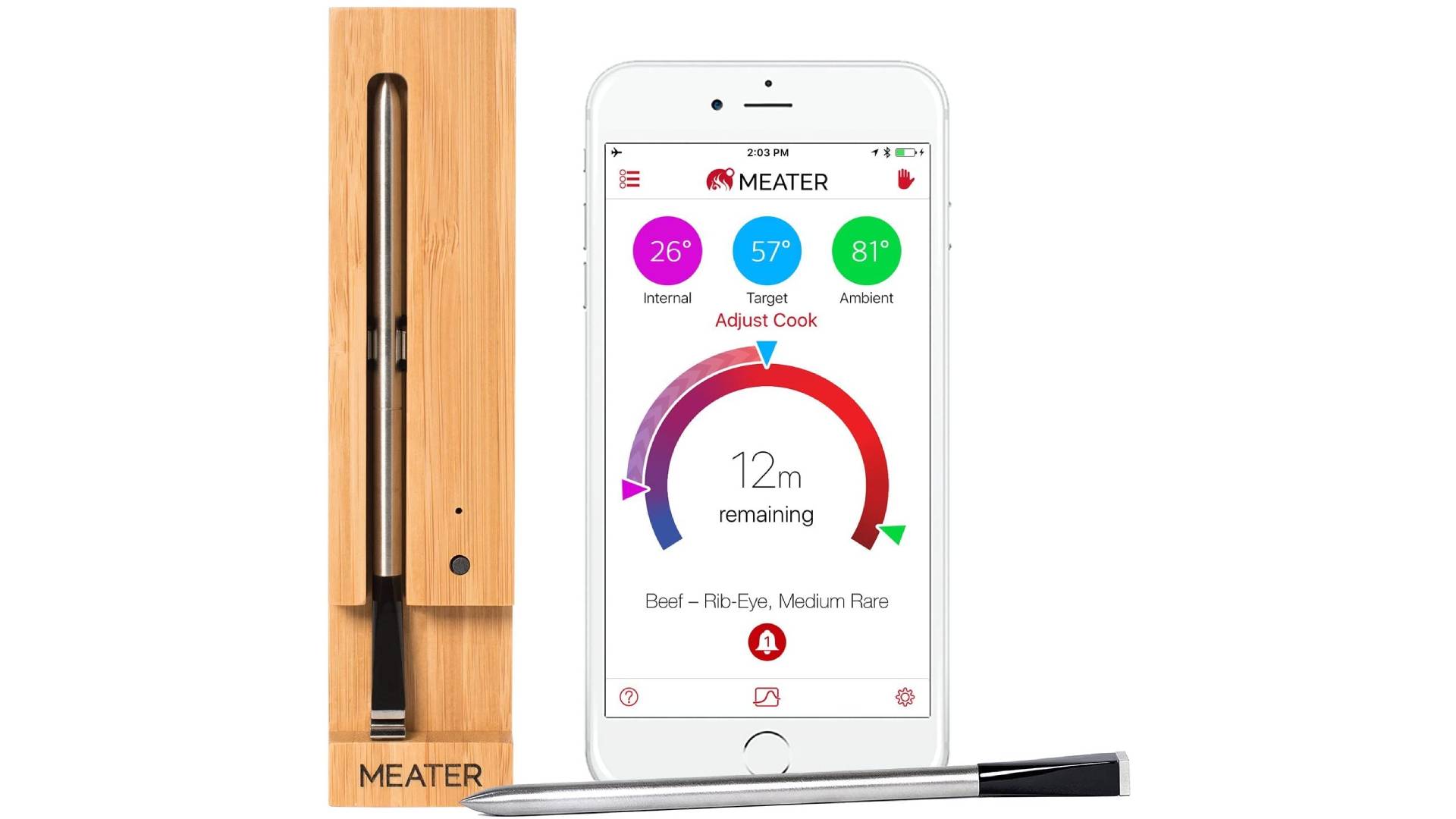
Price: £89 One for the tech and meat lovers! This gadget has up to 10m wireless range and an app that allows you to monitor your meat’s cooking progress from your phone or tablet! The app estimates your cooking time and has handy pre-set options. It’s battery-powered and has a sleek design.
ThermoPro TP02S Digital Meat Thermometer

Price: £9.99 Compact and practical, this thermometer is a great one to pack for camping trips or for when you’re cooking in a kitchen that’s not your own! Within 5 seconds you’ll get an accurate reading with a temperature range of 0-100C. It’s an Amazon best-seller with over 6000 reviews and at under £10, it’s worth the gamble.

Jessica is a freelance food writer, stylist and recipe tester. She previously worked as Senior Food Writer at Future. While at Future Jessica wrote food and drink-related news stories and features, curated product pages, reviewed equipment, and developed recipes that she then styled on food shoots. She is an enthusiastic, self-taught cook who adores eating out and sharing great food and drink with friends and family. She has completed the Level 1 Associate course at the Academy of Cheese and is continually building on her knowledge of beers, wines, and spirits.